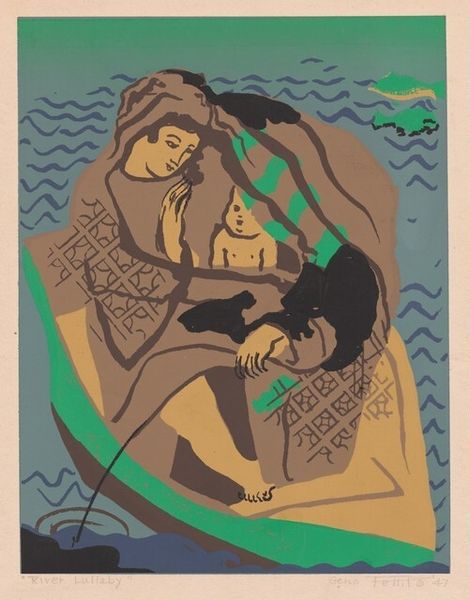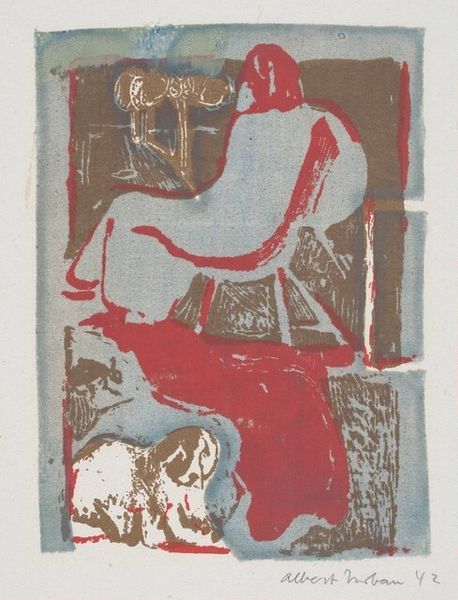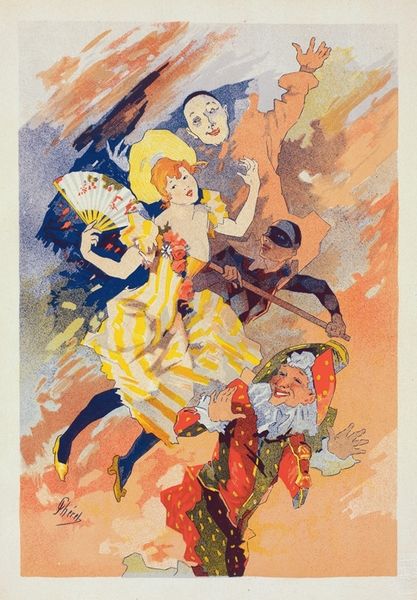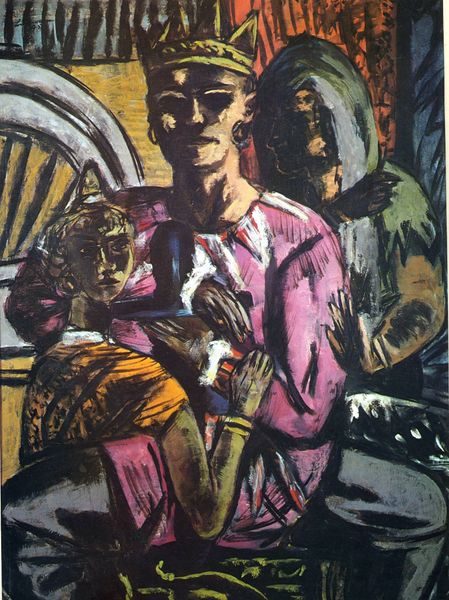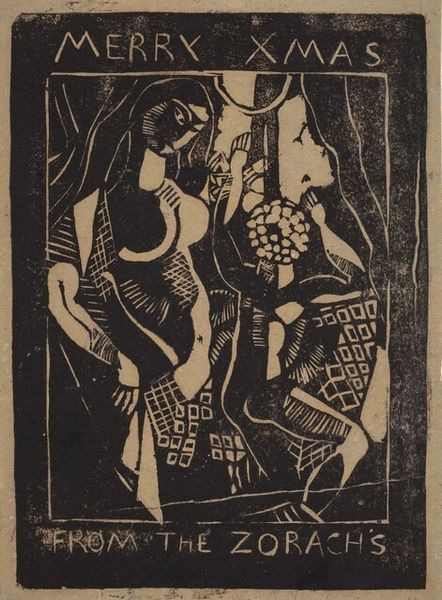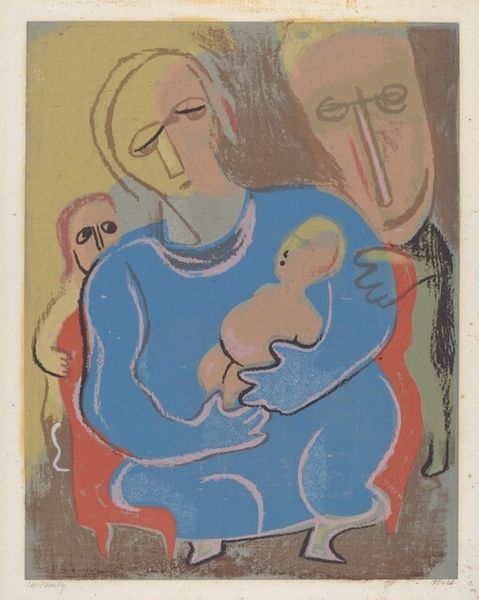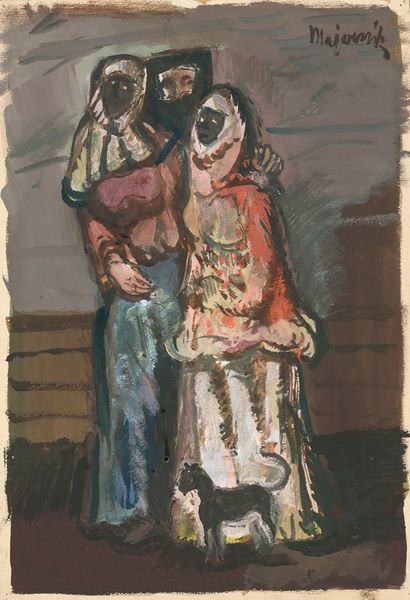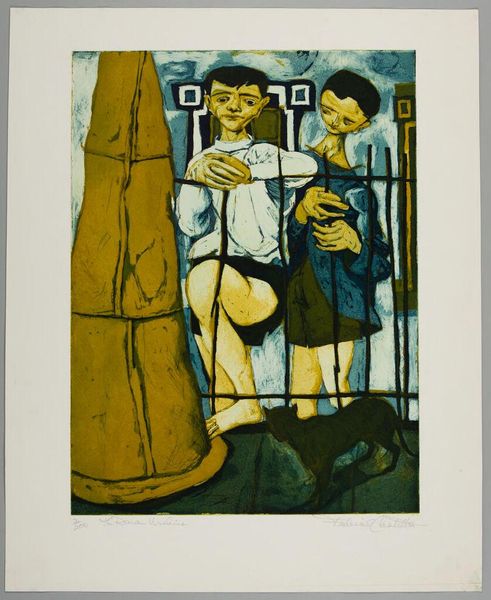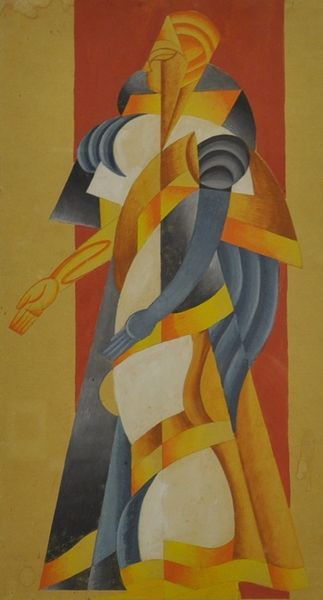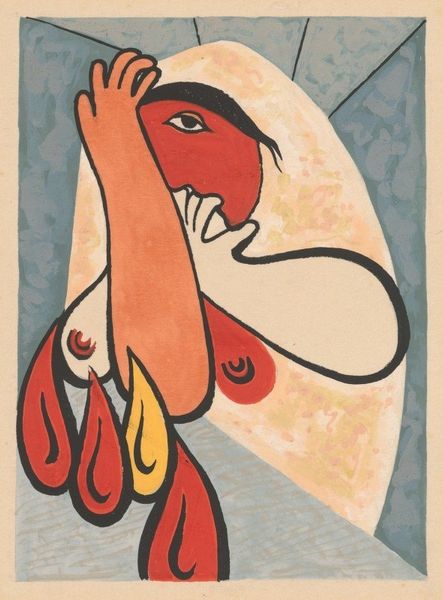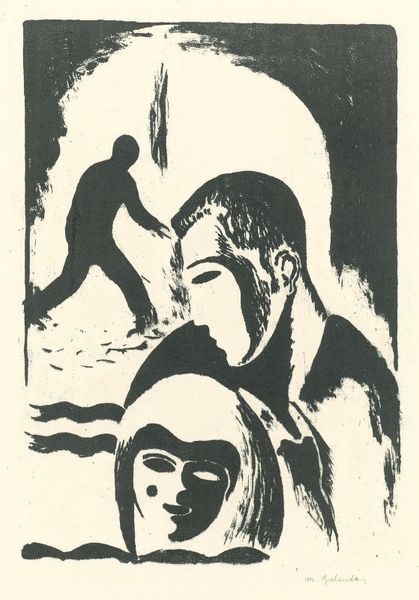
#
portrait
#
abstract painting
# print
#
landscape
#
pop art
#
figuration
#
naive art
#
mexican-muralism
Dimensions: Sheet: 505 x 332 mm Image: 460 x 280 mm
Copyright: National Gallery of Art: CC0 1.0
Curator: Before us is Dorothy Sklar's "Lullaby," a print created around 1950. It depicts a tender scene, a mother cradling her children. Editor: It’s warm, almost feverish, in color. The stylized figures convey such intimate affection and weariness all at once. I want to touch it. Curator: As a print, likely a serigraph or silkscreen given the date and style, this work speaks volumes about artistic accessibility and distribution of art. The bold colors would require careful layering. What social messages do you see at play in the image? Editor: The work reads as a powerful Madonna figure, resonating with themes of maternal strength, labor, and possibly migration given its visual echoes of Mexican muralism, where the common woman carries not only family but the dreams and future of an entire people. Her posture is very telling. Curator: Precisely! The artistic labour here also carries weight. The piece makes a statement on who produces culture and who consumes it, especially considering the print medium, and, importantly, at a potentially lower financial cost compared to unique artworks like painting, thereby democratizing it. Editor: The flattening of form, almost reducing the human figures to abstract blocks of colour, removes details and makes them universal symbols instead of individual portraits, amplifying a collective experience of motherhood across racial, national and cultural lines. Curator: Indeed. This ties into a mid-century trend of making art more accessible and relating directly to lived experiences, breaking from purely academic traditions. I'd love to learn about the provenance of the prints; it’d be so very interesting to understand where they landed after leaving the artist's studio. Editor: Absolutely. Thinking about how such a serigraph might have circulated and whose walls it ended up gracing would unveil even richer contexts for the image and its legacy, the layers within it. Curator: For me, this has reemphasized the significance of considering the artistic process and material conditions of making art, and where it intersects with economic accessibility. Editor: And for me, it serves as a reminder of how effectively art can bridge historical moments with timeless struggles of motherhood and community resilience through these simple artistic techniques.
Comments
No comments
Be the first to comment and join the conversation on the ultimate creative platform.
